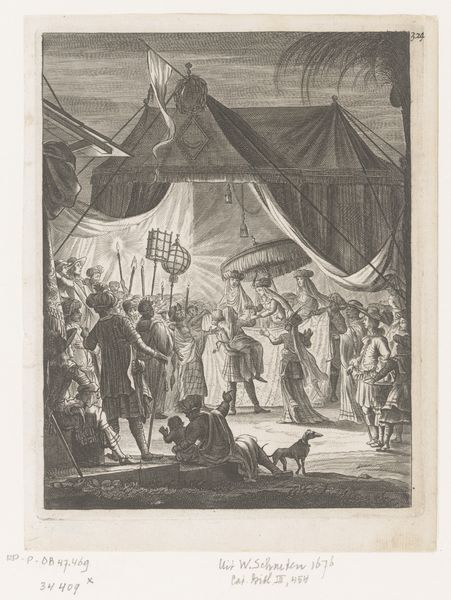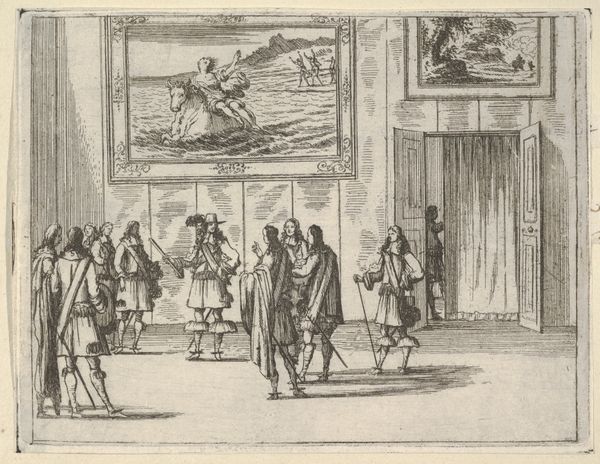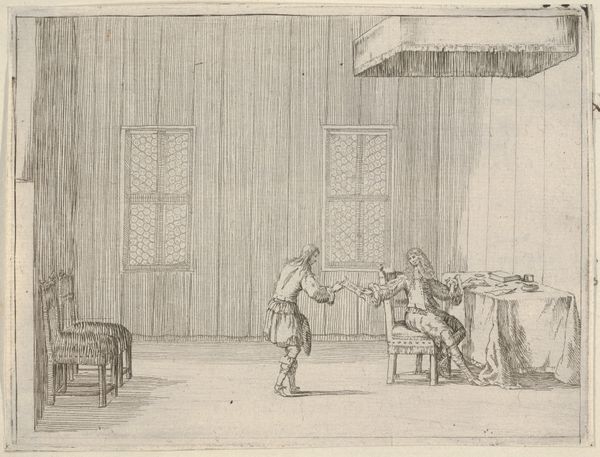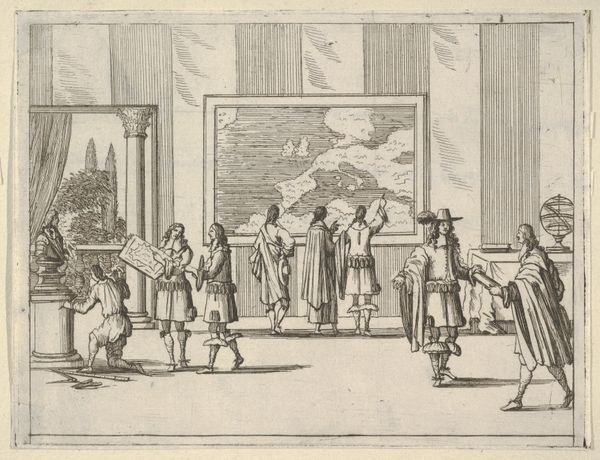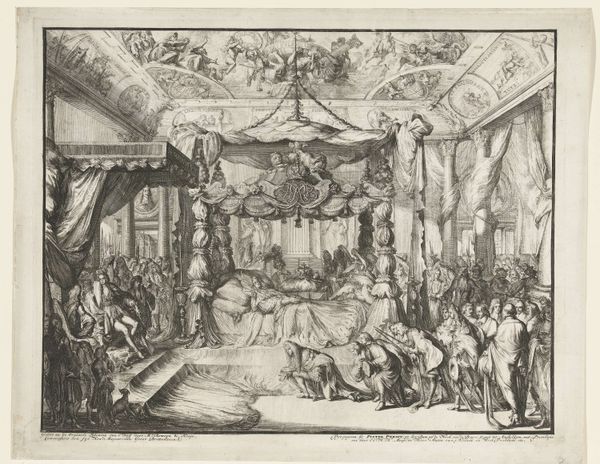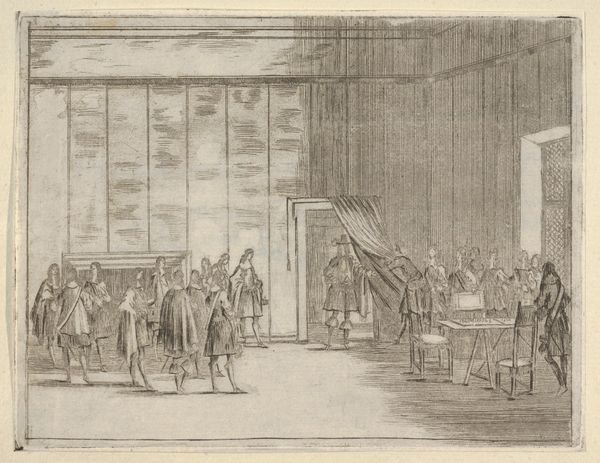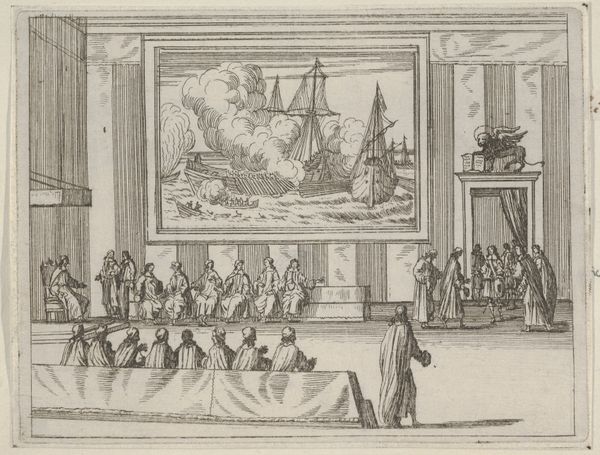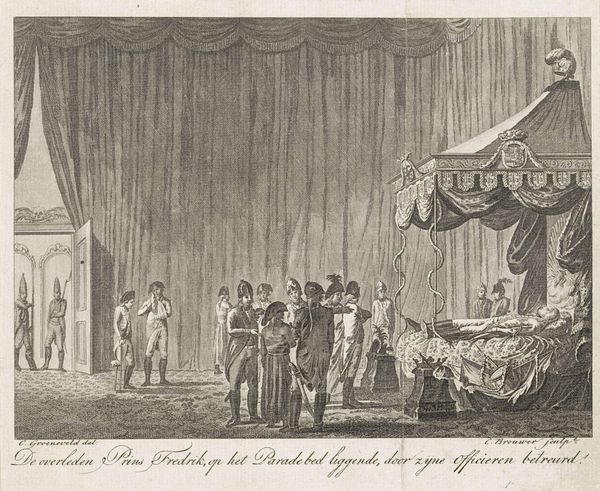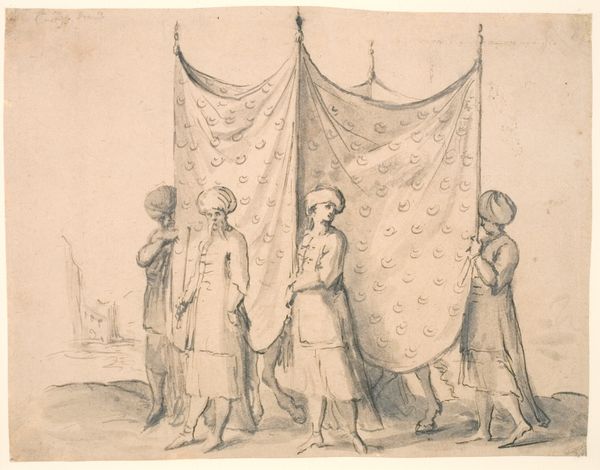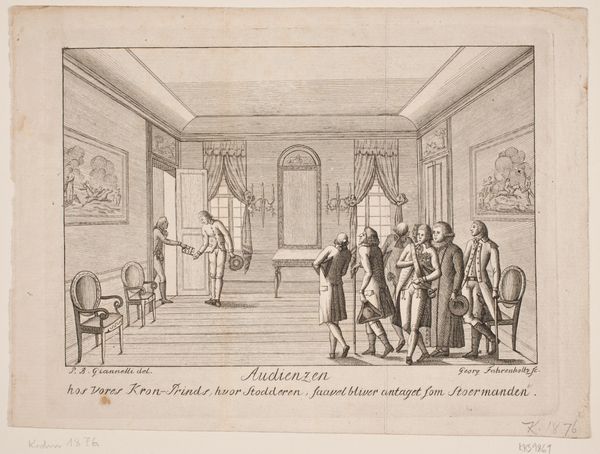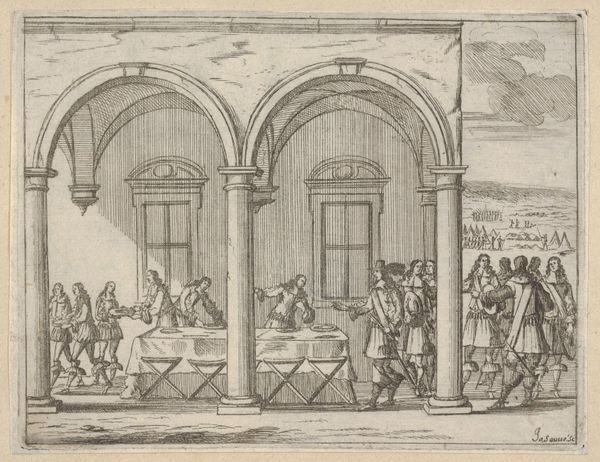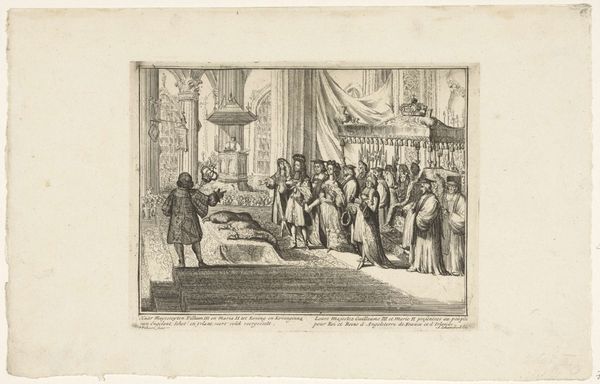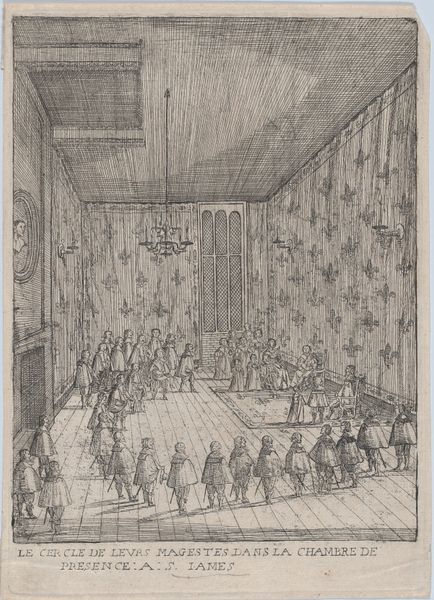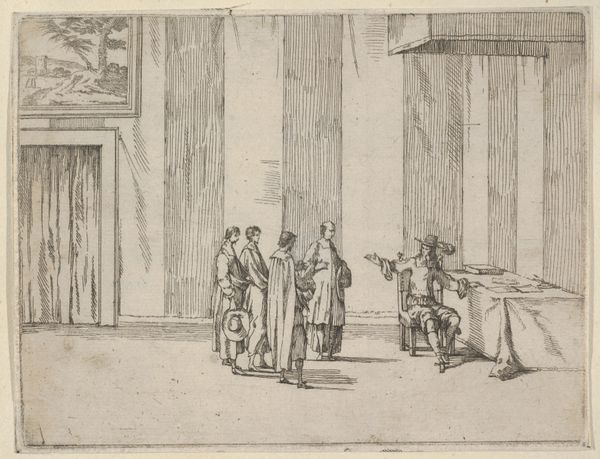![Francesco I d'Este, Wounded in Battle, Continues to Orchestrate the Seige of Pavia, from L'Idea di un Principe ed Eroe Cristiano in Francesco I d'Este, di Modena e Reggio Duca VIII [...] by Bartolomeo Fenice (Fénis)](/_next/image?url=https%3A%2F%2Fd2w8kbdekdi1gv.cloudfront.net%2FeyJidWNrZXQiOiAiYXJ0ZXJhLWltYWdlcy1idWNrZXQiLCAia2V5IjogImFydHdvcmtzL2U0ZDI4NjVkLTdjMGItNDUyZC04NThjLTIzYWVkMTY4MzlhYy9lNGQyODY1ZC03YzBiLTQ1MmQtODU4Yy0yM2FlZDE2ODM5YWNfZnVsbC5qcGciLCAiZWRpdHMiOiB7InJlc2l6ZSI6IHsid2lkdGgiOiAxOTIwLCAiaGVpZ2h0IjogMTkyMCwgImZpdCI6ICJpbnNpZGUifX19&w=3840&q=75)
Francesco I d'Este, Wounded in Battle, Continues to Orchestrate the Seige of Pavia, from L'Idea di un Principe ed Eroe Cristiano in Francesco I d'Este, di Modena e Reggio Duca VIII [...] 1659
0:00
0:00
drawing, print, engraving
#
portrait
#
drawing
#
narrative-art
#
baroque
# print
#
history-painting
#
engraving
Dimensions: Sheet: 4 15/16 × 6 5/16 in. (12.5 × 16 cm)
Copyright: Public Domain
Editor: This is Bartolomeo Fenice’s 1659 engraving, "Francesco I d'Este, Wounded in Battle, Continues to Orchestrate the Seige of Pavia.” The detail is incredible! There's almost a theatrical feel to it, juxtaposing the battlefield with the duke in his bedchamber. How do you interpret this staged scene? Curator: It's crucial to see this image not just as a historical record, but as a piece of political theater, intentionally crafted to shape public perception. Think about the context: the Duke is injured, yet he’s depicted as actively leading the siege from his sickbed. How does this image contribute to the construction of his identity? Editor: It's definitely about projecting power and resilience, despite his physical state. The battlefield visible through the window feels symbolic, as if even illness can’t keep him from war. Is that why he is depicted here instead of on the field? Curator: Exactly! Consider the underlying themes of sacrifice and duty. This engraving is part of a larger visual propaganda campaign, designed to solidify his image as a leader and to perhaps distract from the costs of the conflict. This is baroque, which favors complexity and the dramatic as visual elements of power. Where do you think Fenice fits into this? Editor: So Fenice, by creating this engraving, becomes an active participant in constructing and disseminating that image of power. Interesting how art can be used in such a calculated way. Curator: Indeed! The power of images in shaping history and influencing contemporary narratives cannot be understated. It makes you wonder about the unseen narratives—whose voices were silenced to create this heroic portrait? Editor: That really changes how I see it. It's more than just an image of a Duke; it's a statement about authority, carefully constructed for its time. Curator: And how those constructed narratives persist through time. This image forces us to reckon with how power uses images, even now.
Comments
No comments
Be the first to comment and join the conversation on the ultimate creative platform.
